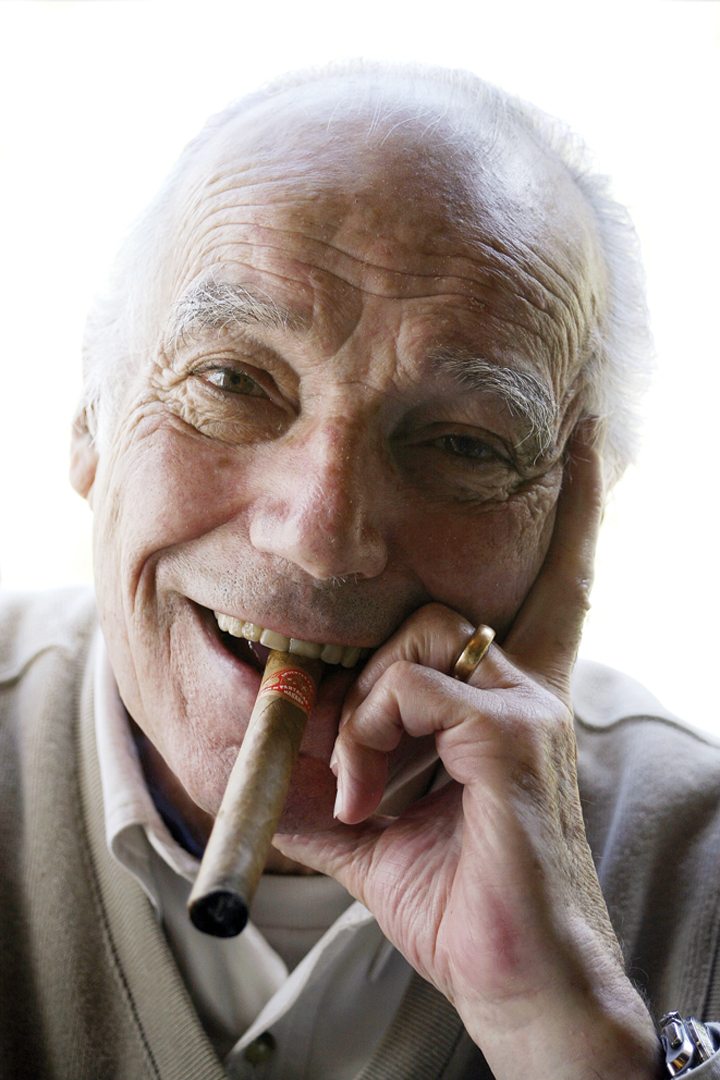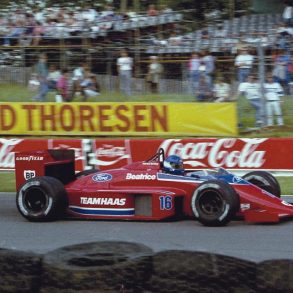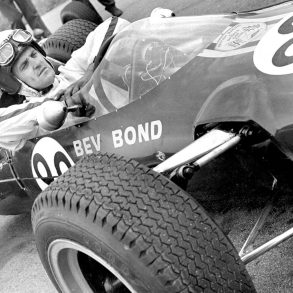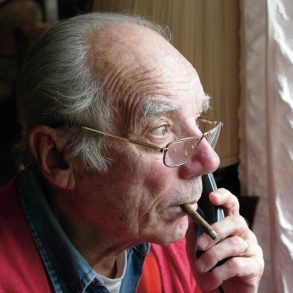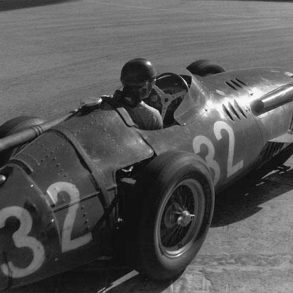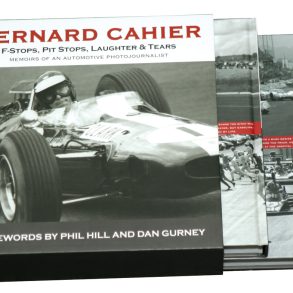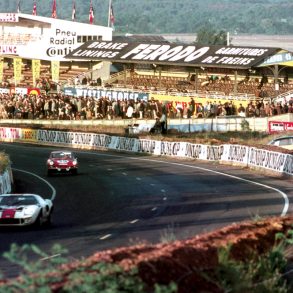When in last month’s review of his latest book we referred to Bernard Cahier as F1’s original photojournalist, we used the present tense, making it all the more difficult to report his early July passing from a series of strokes. He leaves an unrivalled legacy of not only his words and photos, but also his contributions to the greater good of the sport he loved.
Undeniably French, he was born in Marseilles in 1927 and first contracted his addiction to motorsports at age five while watching the Marseilles GP at nearby Miramas. World War II broke out as he was entering adolescence, and by the time of the Normandy invasion he was already devoting his energies to the French Resistance. That service earned Cahier both the Croix de Guerre and the American Presidential Citation for heroism. After the war he came to the USA to study at UCLA, where he met and married his wife, Joan.
He had, of course, brought his passion for motorsports with him and found himself right at home in the postwar California sports car boom. He took a job at Roger Barlow’s International Motors, LA’s top import dealer, where he met and worked with Phil Hill and Richie Ginther. After trying his hand at driving, Bernard decided instead to write about the sport, and thus was born one of the sport’s legendary journalistic careers.
By 1952 he’d returned to France, settling in Paris and welcoming his son Paul-Henri into the family. That fall he traveled to Monza to cover the Italian GP on spec, and his efforts earned an ongoing assignment from the magazine L’Action Automobile that became his ticket to the inner workings of F1. He developed friendships with essentially everyone and was instrumental in helping facilitate the early European experiences of both Hill and Dan Gurney. Bernard eventually achieved his own measure of celebrity, to the point he advised John Frankenheimer during the production of Grand Prix and was rewarded with a cameo role in the landmark film.
He worked tirelessly for media rights, becoming a founding member and eventual president of the International Racing Press Association. After stepping away from constant involvement with F1 in the early ’80s he remained a regular fixture at major races throughout the world, but left the photography to Paul-Henri who has carried on admirably with his father’s work.
Beyond F1, Bernard also played a key role in Kenny Roberts’ success on the Grand Prix Motorcycle scene, championing his cause with Goodyear, whose stepped up involvement helped Roberts become the first American to win the 500-cc World Championship.
It’s never easy to lose an icon, let alone one who was also a friend to so many, but solace can be found in the incredible archive that Bernard Cahier has left behind for our enjoyment.
By John Zimmermann


